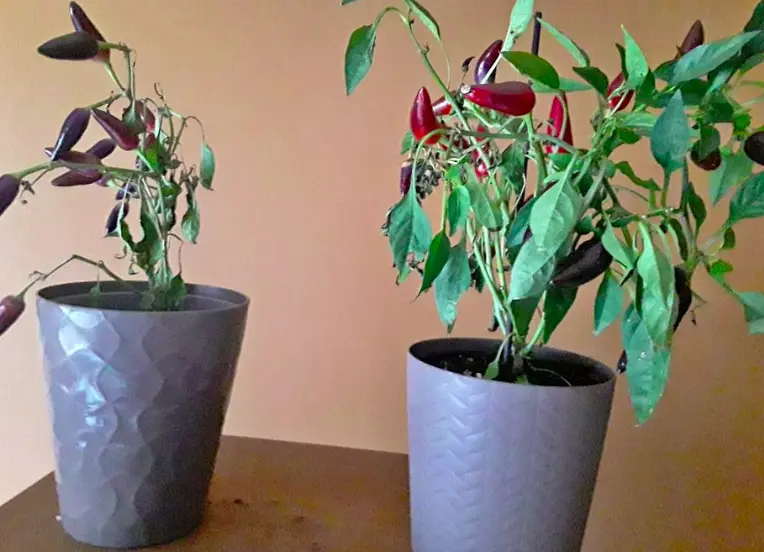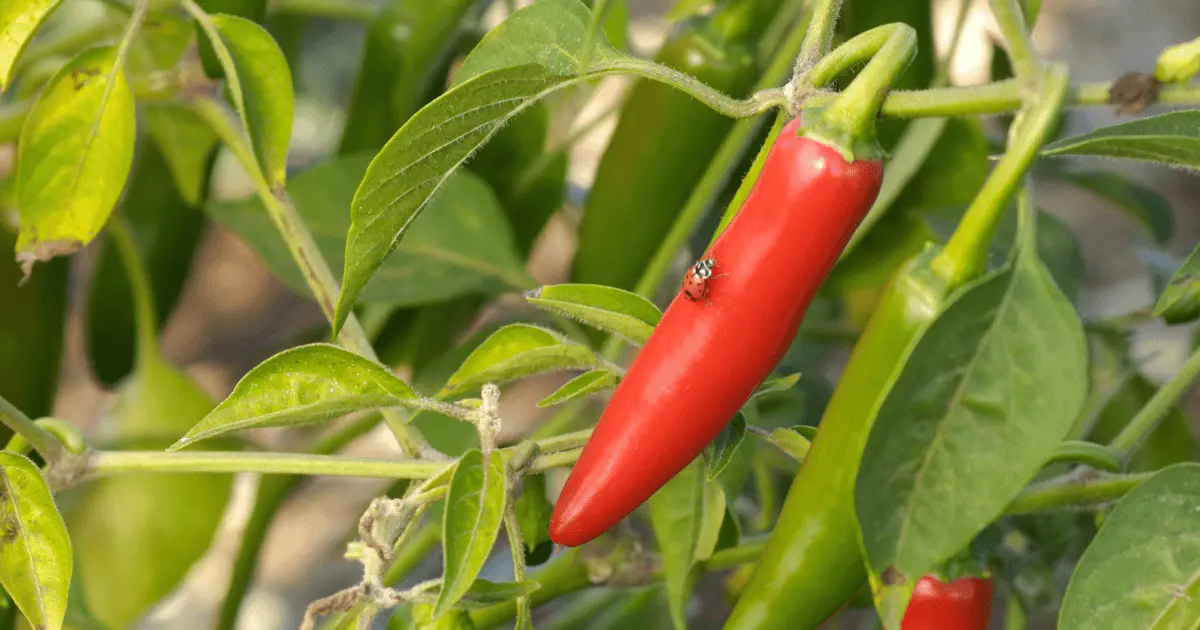Spice plants like jalapenos add color and taste to our dishes and have that bite of heat you want from a good spicy pepper. Still, it is relatively tame, so most people who do not usually eat overly spicy things can enjoy the warmth and texture it brings to the food.
Jalapenos contain carbohydrates, vitamins A and C, Iron, protein, and calcium; they also belong to the same species as bell peppers and cayenne peppers. They also belong to the nightshade family of vegetables, including tomatoes and eggplants.
How to Grow Jalapenos in a pot

Growing jalapenos in a pot at home are quite easy. Plant your seeds two to three months before the start of frost for better growth; this will give them enough time to grow and mature before the end of the growing season.
Step One: Choose the Right Pot
There are different varieties of jalapenos that do well in pots or containers. The senorita jalapenos appear green and eventually turn purple and red when left on the vine until maturity, and they are usually a very hot variety. They grow nearly two feet high; the maturity period is eighty days from seed to maturity.
The Fresno chile jalapeno takes less time to mature and produces smaller, milder fruit than the senorita. The Sierra Fuego variety is a hybrid producing large amounts of pepper per plant and measures three and a half inches long and one with a width of half inches. They take at least eight days to reach maturity.
Another variety that does well in pots is the mucho nacho. They can reach full maturity in sixty to sixty-eight days from seed to harvest. They are longer in size, about four inches long, and do not produce excess heat.
Step Two: Plant at the Right Time
Plant your jalapenos in the spring, or you can plant them when the soil temperature reaches a minimum of sixty-five degrees Fahrenheit. Keep in mind that your seeds will not germinate if there is any sign of frost.
Step Three: Start with a Seed Tray
If you are considering starting your seedlings before the growing season begins in the spring, then you can grow them in a shallow seed tray in a sunny spot at home. You can also place a seedling heating mat under your tray to jumpstart your plant’s growth.
Your seedlings will sprout in four to seven days, so ensure they get enough sunlight. Jalapenos need plenty of sunlight to thrive. So plant them where they can easily get access to direct sunlight. If you are planting indoors, you can substitute direct sunlight with grow lights.
Step Four: Choose the Right Soil
Jalapenos grow well in well-drained sandy, loamy soil with organic matter, which means that you will need to use lots of compost or nutrient-rich potting soil for the best result. Check for the pH levels and soil nutrients such as nitrogen, phosphorus, and potassium.
Also, keep your soil moist by watering when appropriate to avoid plants wilting. When buying your soil, you must purchase from a reputable source like the Home Depot and other sites to avoid buying soil full of insect eggs.
Step Five: Choose the Right pot
Take your time to search for the perfect container. Generally, the size of the pepper variety should determine the pot size you will get. The ideal pot size for harvest is a four to five-gallon pot. If you want to overwinter your peppers, a larger pot, like a 10+ gallon, will be perfect.
Step Six: Planting Jalapenos in a pot
Once your pot has been filled with the right soil and pre-moistened, you can transplant the seedlings that have sprouted. You can transplant them into a slightly larger pot first, ensuring faster growth for your plant.
Plant two to three seeds in each pot, and the depth of the seed should be shallow and covered lightly with soil. It would help if you allowed them to grow in these pots for several weeks before finally moving to the larger pot. Water thoroughly after planting.
Step Seven: Spacing
Plant your seeds fourteen and fifteen inches apart to give their roots enough room to spread. You can then cover the seeds with a quarter inch of potting mix.
Step Eight: Watering and Fertilization
Jalapenos need adequate watering and fertilizer to do well once they sprout. However, since you are growing them in a pot, they don’t need too many nutrients, so be careful not to over-feed them.
You could allow the plant to dry out between waterings; do not overwater them. Your peppers prefer dry conditions over moist. To know when to water your plant again, touch the first two inches of the soil to see if it is dry, then you can water your plant if the soil is dry.
Watering is best done in the morning or evening, so avoid watering your plant during mid-day to avoid sunburn. In addition, watering should be done at the base of the plant and not the leaves to avoid sunburn of the leaves.
Remember to pay attention to your plant to know when to water them. Jalapeno peppers are less likely to use much water on cloudy, damp days, but their need for water will surely increase on sunny and hot days.
Step Nine: Pruning Your Jalapenos Plant
Once the plant is up to six to eight weeks, consider cutting away portions of the plant to allow for new growth. Adequately pruning the plant will help it become sturdier, produce higher yields with more flowers, and give it a compact and rounder shape. Pruning is more encouraged if your jalapenos variety is fast-growing and healthy.
Step Ten: Have a Good Pest Control Plan

Aphids eat the sap in your jalapenos leaves, and they multiply rapidly and can be difficult to spot. You can try setting up sticky paper to attract and trap harmful pests, although this could also trap good pests.
Another way to control this is to try hosing off your plant with a spray nozzle to remove the bugs physically but be mindful of the foliage in the process. You can also introduce ladybugs to your plant, which will feed on aphids and other small insects.
Step Eleven: Treat Infections as Quickly as Possible
If you notice some brown or black spots on your leaves, your plant could be infected with bacteria or fungi. To avoid bacterial infection in plants, strive to keep the bottom leaves away from the soil because the soil harbors many bacteria and pores. You can snipe away low-hanging leaves to avoid this.
Step Twelve: Harvesting Your Jalapenos
Harvesting jalapenos is simple. It is best to pull the pepper in an upward motion when the jalapenos are mature, and it will snipe off readily if it is ripe.
Before harvesting, consider what type of jalapenos pepper you want. If it is the red jalapenos, you would need to leave them on the plant until they change from green to black and finally red.
You could save your seeds if you plan to plant again next year. One or two peppers might be enough to achieve this, as one produces dozens of seeds. For replanting, use ripe peppers and ensure they are well-dried out; then, you can store the seeds for future use.
The steps involved in planting jalapeno peppers are easy to follow, and the yields are worth the effort of planting them. The uses are so many, and they make for a good spicy meal. Jalapenos can serve for a long time, so it’s best you start planting.
